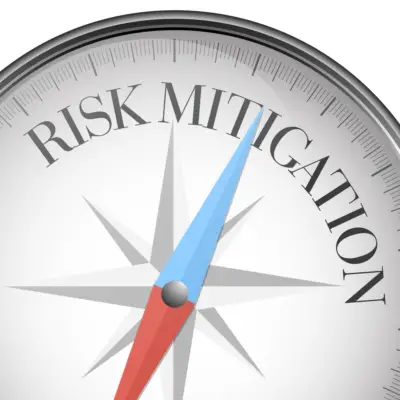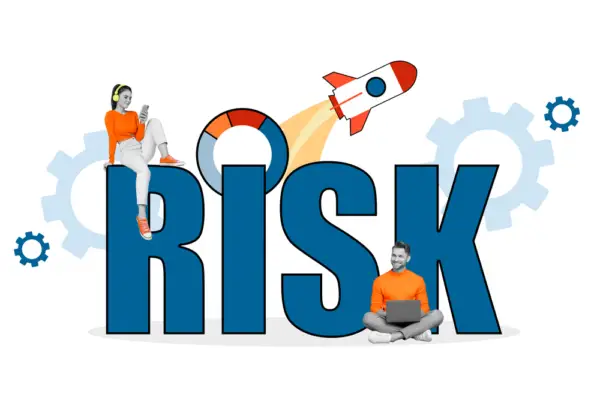Risk reporting is a critical component of an organization’s risk management framework. It involves the process of documenting and communicating the findings related to risk assessments, risk measurements, and risk mitigation activities to relevant stakeholders.
Effective risk reporting ensures that the management team, board of directors, and sometimes external stakeholders are informed about the organization’s risk profile and the steps being taken to manage those risks.
Key aspects of risk reporting include:
- Timeliness: Reports should be provided on a regular basis and in time for decision-makers to take action (LinkedIn).
- Accuracy: Information must be reliable and precise to support informed decision-making.
- Relevance: The report should focus on risks that are most pertinent to the organization’s objectives and operational environment.
- Clarity: Reports should be clear and understandable, avoiding technical jargon where possible, to ensure that all stakeholders can comprehend the risks being reported.
- Actionability: The report should provide actionable insights that can guide risk mitigation efforts.
- Comprehensiveness: It should cover all significant risks, including emerging risks, and consider both internal and external factors that might impact the organization.
Risk reporting helps organizations to maintain a clear understanding of their risk landscape, supports strategic planning, and aids in maintaining compliance with regulatory requirements.
It also plays a role in fostering a risk-aware culture by keeping risk at the forefront of strategic discussions and operational planning.
Organizations across industries are realizing the importance of having a robust framework in place to identify, assess, and communicate risks to stakeholders.

However, the question that arises is, what are the key components of an effective risk reporting framework? How can organizations ensure that they are capturing and analyzing all potential risks? And, most importantly, what are the best practices for implementing risk reporting?
In this discussion, we will delve into these questions and explore the significance of risk reporting in helping organizations make informed decisions and mitigate potential threats.
Key Takeaways
- Risk reporting provides transparency for informed decision-making and enhances credibility of risk reporting processes.
- Transparency in risk reporting promotes open communication and collaboration, enabling stakeholders to make informed decisions.
- Risk mitigation strategies and best practices are crucial for identifying, analyzing, and addressing potential risks.
- Effective risk reporting frameworks help in managing and communicating risks effectively, ensuring organizational resilience.
The Significance of Risk Reporting
The significance of risk reporting lies in its ability to provide transparency, allowing stakeholders to make informed decisions.
By clearly communicating risk mitigation strategies, organizations can proactively address potential threats and minimize their impact.
Following reporting best practices ensures accuracy, consistency, and reliability, thereby enhancing the credibility of risk reporting processes.
Importance of Transparency
Transparency plays a crucial role in risk reporting, ensuring accountability and fostering trust among stakeholders.
By providing clear and comprehensive information about risks, impacts, and action steps, transparency enables stakeholders to make informed decisions.
It allows them to gain valuable insights into the context and objectives of risk reporting, enabling better understanding and alignment.
Moreover, transparency promotes open communication and collaboration, facilitating effective risk mitigation strategies and enhancing overall organizational resilience.
Risk Mitigation Strategies
Risk mitigation strategies play a crucial role in risk reporting, as they highlight the significance of identifying, analyzing, and addressing potential risks to ensure organizational resilience. These strategies enable informed decision-making and proactive action to mitigate risks.
To effectively implement risk mitigation strategies, organizations should consider the following:
- Identify key risk indicators and monitor them regularly.
- Develop processes to assess and prioritize risks.
- Involve project managers in risk assessment and mitigation.
- Address both operational and business risks to improve company performance.
Reporting Best Practices
Effective risk reporting is essential for organizations to make informed decisions and ensure resilience in the face of potential risks. By providing a comprehensive view of the company’s risk profile, risk reports enable senior management to identify and prioritize risks, develop appropriate risk responses, and monitor their effectiveness.
These reports also serve as a valuable tool for users, such as investors and regulators, to assess the company’s risk management practices and evaluate its overall performance.
Risk registers play a crucial role in capturing and documenting risks, making them an integral component of effective risk reporting.

Key Components of an Effective Risk Reporting Framework
In order to establish an effective risk reporting framework, it is crucial to consider three key components:
- Risk identification involves identifying potential risks that may impact the organization.
- Risk assessment and analysis involves evaluating the likelihood and impact of these risks.
- Risk response planning involves developing strategies to mitigate or respond to identified risks.
These components are essential for organizations to effectively manage and communicate risks.
Risk identification
The process of identifying risks is a crucial component of a well-designed framework for risk reporting. To effectively identify risks, companies should consider the following:
- Perform a thorough analysis of the company’s performance and operations to identify potential risks.
- Ask critical questions about the company’s risk exposures and vulnerabilities.
- Prepare a comprehensive portfolio risk report that outlines the types of risks the company faces.
- Identify and prioritize the biggest risks that could significantly impact the company’s performance.
Risk assessment and analysis
Risk assessment and analysis play a crucial role in developing a comprehensive framework for reporting on potential risks.
This process involves evaluating various aspects such as financial risks, major risks, and market risks.
The risk management team utilizes risk management tools to assess and analyze the identified risks at different levels, including program-level risks.
The findings from the risk assessment are then documented in a program risk report, which provides valuable insights into the overall risk levels and helps in effective risk reporting.
Risk response planning
As part of an effective risk reporting framework, a comprehensive risk response planning process is essential for mitigating potential risks and ensuring the successful management of an organization’s risk profile.
To achieve this, the following key components should be included:
- Analysis of potential impacts and identification of risk tolerance levels.
- Development of goals and objectives for risk mitigation.
- Creation of heat maps to visually represent the highest and lowest levels of risk.
- Utilization of performance metrics as a communication tool and to provide a snapshot of risk management.
Identifying and Assessing Risks in Risk Reporting
In order to ensure accurate and informative risk reporting, it is crucial to effectively identify and assess potential risks.
This requires a strong risk management framework that includes the creation of a comprehensive list of risks and the implementation of robust risk governance.
Risk management reports play a vital role in this process by providing information on risk mitigation strategies and aggregate risk measures.
Additionally, the concept of risk universe helps in identifying and categorizing risks, while risk aggregation allows for a holistic view of the organization’s risk profile. A risk dashboard can further enhance risk reporting by providing a visual representation of key risk indicators.
Effective risk management practices are essential in identifying and assessing risks to facilitate meaningful risk reporting.
Communicating Risks to Stakeholders
Effective communication of risks to stakeholders is imperative for ensuring transparency and informed decision-making within an organization. To effectively communicate risks, organizations can consider the following:
- Engage risk managers and the board-level risk committee to ensure accurate risk measurement and reporting.
- Address privacy risks by implementing appropriate safeguards and clearly communicating them to stakeholders.
- Utilize risk reporting tools to streamline the risk process and provide timely and actionable information.
- Tailor risk reports to meet the specific needs of users, such as decision-makers at the business level.
Types of Risks in Risk Reporting
When it comes to risk reporting, there are various types of risks that organizations need to consider. These include:
- Operational risks.
- Business risks.
- Financial risks.
- Market risks.
- Credit risks.
Each of these categories represents different areas where potential risks can arise, and it is crucial for organizations to identify, assess, and communicate these risks effectively to stakeholders.
Operational risks
Operational risks are inherent in the day-to-day functioning of an organization and can significantly impact its financial stability and reputation. When it comes to operational risks, organizations need to consider various factors such as risk capacity, analysis of risk, and approach to risk management.
Here are four key aspects to consider when dealing with operational risks:
- Individual project risks: Understanding the risks associated with each project is crucial for effective risk management.
- Aggregate risk exposure: Assessing the overall risk exposure of the organization helps in identifying potential vulnerabilities.
- Core and non-core risks: Distinguishing between core and non-core risks allows organizations to prioritize risk mitigation efforts.
- Cascading and differential impacts: Identifying the potential cascading and differential impacts of operational risks helps in developing proactive risk mitigation strategies.
Business risks
Business risks are an integral component of risk reporting, encompassing a range of factors that can potentially impact the financial performance and strategic objectives of an organization.
Risk reporting involves the identification, assessment, and management of these risks, which are then communicated through risk reports to aid decision making.
A robust risk management framework helps organizations address business risks effectively, including those related to disaster risk solutions, climate risk, and the achievement of sustainable development goals.
Financial risks
Financial risks are a critical aspect of risk reporting, encompassing various factors that have the potential to impact an organization’s financial performance and strategic objectives.
To effectively manage and report on financial risks, organizations should consider the following:
- Incorporating financial risks into the risk management framework.
- Generating risk reports that highlight aggregated risk exposure.
- Identifying and addressing core risks in the business risk report.
- Utilizing risk-adjusted performance reports to assess the distribution of risks and gain real-time insights.
Market risks
Market risks play a crucial role in risk reporting, encompassing various factors that can significantly impact an organization’s market position and overall competitiveness. When it comes to market risks, organizations need to consider aspects such as cyber risk management, timing of risk reports, and the practice of providing actionable risk reports.
Advanced risk modeling is also essential in analyzing market risks. Furthermore, the approval of core risks and the involvement of board-level risk and/or audit committees are important aspects of effective risk management in reporting.
Credit risks
Credit risks are a significant aspect of risk reporting, encompassing various factors that can have a significant impact on an organization’s financial stability and ability to meet its obligations.
To understand credit risks better, consider the following:
- Risks to objectives: Credit risks can hinder an organization’s ability to achieve its business plan objectives.
- Contextual factors: External factors like economic conditions and market trends can influence credit risks.
- Core business processes: Credit risks can affect key processes such as sales, lending, and collections.
- Competitor analysis: Monitoring credit risks of competitors can provide insights for decision making.
These points are important to consider for both certification exam questions and in-depth discussions on credit risks in risk reporting.

Environmental risks
Environmental risks play a crucial role in risk reporting, encompassing various factors that can have a significant impact on an organization’s operations, reputation, and long-term sustainability.
These risks include climate change, natural disasters, resource scarcity, and regulatory changes. To effectively manage and report environmental risks, organizations need to incorporate them into their risk management framework and establish board-level risk committees.
Additionally, utilizing climate risk datasets and cyber risk reports can provide valuable risk information to enhance decision-making and mitigate potential disruptions.
| Risk Type | Key Risks |
|---|---|
| Climate Change | Rising temperatures, extreme weather events |
| Natural Disasters | Floods, hurricanes, earthquakes |
| Resource Scarcity | Water scarcity, energy shortages |
| Regulatory Changes | Environmental regulations, carbon pricing |
Components of a Comprehensive Risk Report
When preparing a comprehensive risk report, it is essential to include all relevant information in a clear, concise, and precise manner. To effectively address risks and meet critical objectives, the report should incorporate the following components:
- Common risk reporting types, such as financial, operational, and strategic risks.
- Components of risk information, including risk identification, assessment, and mitigation strategies.
- Developments in risk reporting, such as the integration of environmental risks and the use of a dataset of climate risk.
- Board-level risk and/or audit committees, ensuring combined risk oversight and a comprehensive risk management framework.
Best Practices for Implementing Risk Reporting
Implementing risk reporting effectively requires careful consideration of best practices to ensure accurate and comprehensive identification, assessment, and management of risks.
To meet the needs of the audience for risk reporting, such as board-level risk and/or audit committees, it is important to incorporate various elements.
This can include daily risk reports, cyber risk reports, calibration of disaster risk, cyclone risk modelling, datasets on climate risk, and performance reports such as risk-adjusted performance reports.
Addressing complaints of risk reporting and utilizing these best practices can enhance the effectiveness and usefulness of risk reporting.
| Elements of Best Practices for Implementing Risk Reporting |
|---|
| Daily risk reports |
| Cyber risk reports |
| Calibration of disaster risk |
| Cyclone risk modelling |
| Datasets on climate risk |
| Performance reports (e.g., risk-adjusted performance) |
Frequently Asked Questions
How Can Risk Reporting Help Organizations in Making Informed Decisions?
Risk reporting plays a crucial role in assisting organizations in making informed decisions. By providing comprehensive and timely information about potential risks, organizations can better assess and mitigate these risks, leading to improved decision-making and overall organizational performance.
What Are the Potential Challenges in Implementing an Effective Risk Reporting Framework?
Implementing an effective risk reporting framework can present several challenges. These may include difficulties in data collection and analysis, ensuring accurate and timely reporting, aligning with organizational objectives, and achieving stakeholder buy-in and participation.
How Can Organizations Ensure That They Have Identified and Assessed All Relevant Risks in Their Risk Reporting Process?
Organizations can ensure they have identified and assessed all relevant risks in their risk reporting process by conducting comprehensive risk assessments, involving key stakeholders, utilizing data analytics, and regularly reviewing and updating their risk management frameworks.
What Are Some Effective Strategies for Effectively Communicating Risks to Stakeholders?
Effective strategies for communicating risks to stakeholders include clear and concise messaging, tailored to the audience’s level of understanding, utilizing visual aids or infographics, providing regular updates, and fostering open dialogue to address concerns and gather feedback.
Can You Provide Examples of Different Types of Risks That Are Commonly Addressed in Risk Reporting?
Different types of risks commonly addressed in risk reporting include financial risks, operational risks, strategic risks, regulatory risks, and reputational risks. Each type of risk requires specific analysis and reporting to ensure effective risk management.

Conclusion
In conclusion, risk reporting plays a crucial role in organizations by providing a comprehensive framework to identify, assess, and communicate risks to stakeholders.
By implementing an effective risk reporting system, organizations can better understand and manage potential risks, ultimately improving decision-making and overall performance.
To ensure the success of risk reporting, it is essential to follow best practices and include key components in a comprehensive risk report.

Chris Ekai is a Risk Management expert with over 10 years of experience in the field. He has a Master’s(MSc) degree in Risk Management from University of Portsmouth and is a CPA and Finance professional. He currently works as a Content Manager at Risk Publishing, writing about Enterprise Risk Management, Business Continuity Management and Project Management.

